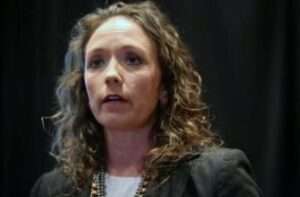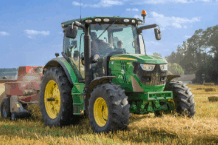As reported in the High Plains Journal. In rural areas, when the word infrastructure is thrown out, things like buildings, roads or power supplies come to mind. Essential services like medical care could be included. What about rural areas? What about essential services like veterinary care for livestock?
Rosslyn Biggs, director of continuing education Oklahoma State University College of Veterinary Medicine and beef cattle specialist for the Oklahoma Cooperative Extension Service, spoke about the direction of rural veterinarians at the Cattle U and Trade show during late July in Dodge City, Kansas. She said in her profession, there’s a lot of discussion about the number of available veterinarians in rural areas.
“Do we actually have a veterinarian shortage?” she said. “Or do we really have areas that are simply underserviced that are not able to or not willing at the current time to support a veterinarian in their communities?”
Biggs said this issue is something livestock producers need to be aware of especially since there are regulations on the horizon involving over-the-counter antibiotics moving back to veterinarian restrictions.
“That’s going to increase the need for veterinarians to have a relationship with producers in your area and vice versa,” she said. “There’s a lot of puzzle pieces to this and it’s complicated and there’s no easy answers. There’s no silver bullet. It’s not going to be fixed next week.”
The issue needs to continually be discussed and not ignored. When new veterinarians go into rural areas, there are a number of things to consider.
“New rural veterinarians make less than their urban or suburban counterparts,” she said. “That’s maybe not surprising. Mixed practices, which a vast majority of our rural practitioners are, make just under $4,000 less than their small animal counterparts.”
Biggs said there is about 116,000 veterinarians in rural medicine in the United States. Of those in food animal or mixed animal veterinary practices, 9% of those are in areas where the beef industry is prevalent. Sixty percent of veterinarians are female, and the same percentage are over the age of 46.
“So what that trend means is we have veterinarians that are working well into years that are traditional retirement years,” she said.
There are a lot of questions about a veterinary practice when a vet reaches retirement age, and if a change of ownership can take place. Biggs asks if the practice is sustainable or makes enough money to keep the practice going and invest in equipment to keep moving forward.
Most often in rural communities there is a certain amount of social isolation, and for one of Biggs’ colleagues in Texas, she’s found her own way to succeed. When asked what her biggest challenge was owning multiple practices and getting new associate veterinarians into the practice, Biggs was surprised at the answer.
“She said, ‘I can’t find their spouses jobs.’ So that is the biggest challenge in her area,” Biggs said. “My hope is it looks different after this pandemic, where we showed a number of areas that people can work remotely. Maybe that helps us, but there’s still labor issues that are a huge factor in all of agriculture and veterinary medicine is no exception.”
Her friend in Texas also mentioned she couldn’t find childcare for herself, other veterinarians and employees in the practice. Biggs said this particular vet bought a house in town and found a childcare expert and now the practice owns a daycare.
“You have childcare options,” she said. “So it’s going to take things like that. Thinking out of the box. Maybe stretching the limits a little bit to solve some of these problems.”
Work-life balance is also a challenge for many veterinarians, as is mental health.
“I think we need to be talking about those issues much more so than we have in the past,” she said.
What to do?
Biggs believes the need for rural veterinarians starts by identifying students early in their academic careers who want to be a vet. The responsibility lies not just on veterinarians and parents, but also on the entire community.
“Successful people have good relationships,” she said. “So for pre-veterinary students, we need to be recruiting those students or we need to be exposing students, regardless of their background to veterinary medicine, to STEM fields to the science and math.”
They could start in grade school, in 4-H and FFA programs, to help filter those interested kids to veterinary programs.
Those students need to be coached and mentored all the way through their academic careers.
“Just because you’re not a veterinarian, doesn’t mean you can’t coach a student who wants to pursue that path,” Biggs said. “Things that you bring to the table as producers in real world experience. You bring ability to communicate with a team of people because, in my mind, I want producers to see veterinarians not as an expense. I want you to see veterinarians as a team member that makes your operation that makes your enterprise more successful, more profitable at the end of the day.”
Biggs’ goal as your veterinarian is to “work us out of a problem.”
“So that we can sit down at the end of the year and say these are the goals for the year. This is what we’re going to focus on and what do I help you do as a veterinarian,” she said. “What do I bring to the table for your operation to make sure that you’re successful when we look at that another 12 months.”
As far as getting veterinarians into underserved areas, it again starts with the students.
“We have to be supporting the students early.” Biggs added that regardless of their background or where they come from, if a student wants to pursue veterinary work the community needs to figure out how to make that happen
These things are also important not just from an individual perspective, but from a community perspective and from a state perspective. Legislators need to be aware of the issue, and looking at where the dollars go at the end of the day. Biggs said at Oklahoma State, she wants to make sure students are succeeding with the curriculum.
Be open to a new vet
Biggs encourages those in a community with a new vet in the area to give them a little bit of grace. She certainly experienced that in her years following graduation and working in a practice in Chickasha, Oklahoma.
“We want them to become part of the community,” she said. “We want them to settle down with roots. We want them to feel like they are included.”
Rural communities also need to focus on small business sustainability, and that’s not an easy task.
“We look at lots of small towns and we see small businesses that are struggling. Veterinary medicine can be can be no exception to that,” she said. “So I encourage you to discuss with your veterinarian, what are there things we can do to keep you here?”
Finding a work life balance for new graduates is also a challenge.
“It’s a very challenging situation when you feel like there’s no escape from it,” she said. “For a veterinarian to take a vacation—some of you may find that that’s probably a rare occurrence.”
Also, when it comes to family and social, there has to be a situation in practice designs where people can live a life. It was not uncommon when she was in practice where her husband wasn’t sure of her schedule and when she’d be home.
“We’ve got to be able to look at practice designs and that can be difficult if you have been used to having a veterinarian that is on call. Ready to go for you every 24 hours of 365 days,” she said. “We have to allow people again that grace. We have to allow people to do things to be able to work to live, not just live to work.”




